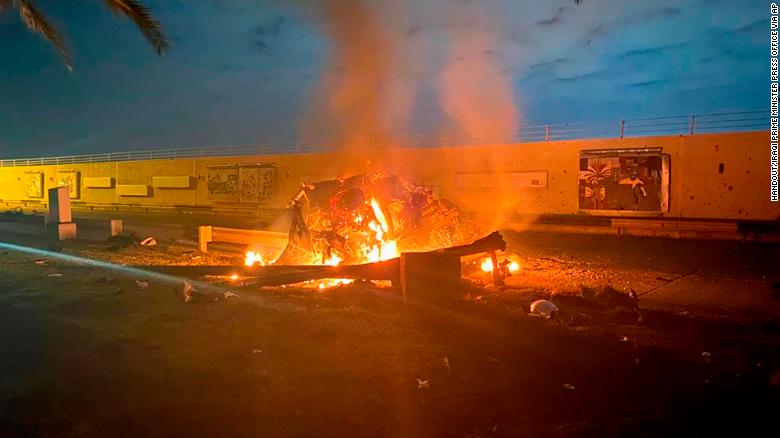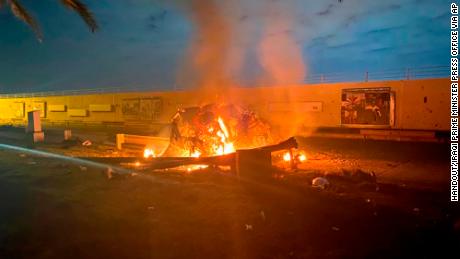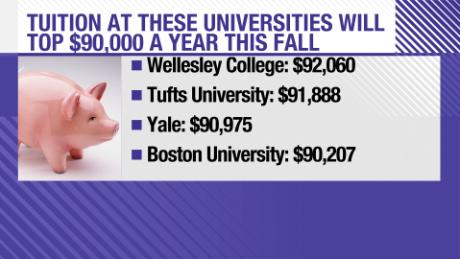London (CNN Business)A sharp escalation of tensions between the United States and Iran has caused crude oil prices to surge. They may not stay elevated for long.
Tehran has promised retaliation for the killing of top general Qasem Soleimani on President Donald Trump's orders. But analysts expect a limited response that won't significantly disrupt crude supplies, keeping a lid on oil prices.
Analysts at Eurasia Group, a risk consultancy, say retaliation will be carefully calibrated and likely stop short of what would be considered a major, or even limited, armed conflict.
Instead, Eurasia Group expects roughly a month of low-level clashes between Iranian-backed militias and US forces in Iraq, where the airstrike on Soleimani occurred. Tehran is also likely to resume harassment of commercial shipping in the Persian Gulf.
Another obvious target is oil industry infrastructure belonging to Iran's regional foes in the United Arab Emirates or Saudi Arabia, the world's largest exporter of crude oil. The United States blamed Iran for a missile strike on Saudi Arabia in September that briefly took out more than half of the kingdom's oil production.
Iran denied responsibility for that attack, and analysts say it's unlikely to try something similar right now for fear of triggering an even bigger military backlash from the United States and its allies.
"In the near term, we're not expecting any supply outages," said Amrita Sen, chief oil analyst at Energy Aspects. "Iran is not irrational. They're not going to react quickly ŌĆö they are going to take their time."
That would leave existing market forces, including a looming supply surplus, to do their work on prices and counter any upward pressure triggered by a more sporadic Iranian response.
The International Energy Agency said in its most recent oil market report that it expects a "significant" oil supply surplus early this year. The glut is expected to materialize even though OPEC and its allies are restricting output.
That's in large part because of a huge surge in US shale output that has pushed production to more than 12 million barrels per day. Also in play: a weak global economy is likely to limit demand growth for energy in 2020.
Targets have been hit recently
Investors have been dealing with the threat of disrupted supplies from the Middle East for months.
Oil prices spiked more than 14% in September after the coordinated attacks on Saudi Arabian energy production facilities disrupted 5% of the daily global oil supply.
The price of Brent crude, the global benchmark, peaked above $69 per barrel following the attack. Brent prices matched that level on Friday.
It took Saudi Arabia just 11 days to restore production after the September attack, according to the International Energy Agency. By early October, Brent prices had given up their gains and dipped back below $57 per barrel.
While the attack unnerved investors, there were signs that the people who planned it had tried to limit the damage by avoiding hits on the most sensitive part of the facilities: the oil well heads.
That contrasts with the tactics used by the Iraqi army during its retreat from Kuwait under US bombing in 1991, when well heads were targeted causing gushing infernos that burned for weeks.
Commercial shipping in the region could also come under threat from Iran.
Last year, attacks on two ships ŌĆö one carrying oil and the other transporting a cargo of chemicals ŌĆö in the Gulf of Oman caused a temporary uptick in oil prices.
The attacks took place near the Strait of Hormuz, a narrow channel off Iran's southern coast that is the only link between the Persian Gulf and the world's oceans. Roughly 20 million barrels of oil transit the strait each day.
Risky business
While there are powerful factors that are likely to restrain Iran, including a weak economy and volatile domestic political climate, there is still a risk of a more intense conflict with the United States and its allies.
That could lead to more significant oil supply disruptions and renewed upward pressure on prices.
According to Eurasia Group, prices could head toward $80 per barrel if conflict spreads to the oil fields of southern Iraq or if harassment of commercial shipping intensifies.
Iraqi oil production collapsed in the aftermath of the American-led invasion in 2013 but has since recovered strongly, hitting 4.7 million barrels per day in late 2019, according to the International Energy Agency.
Energy Aspects' Sen said that it would be hard to replace the type of oil produced in southern Iraq, which is heavier than other forms of crude. Supply from Venezuela, an alternative source, has been heavily curtailed.
Oswald Clint, an oil industry analyst at Bernstein, said other factors could help support prices. US shale production is slowing, he said, and OPEC announced further supply cuts in December. Venezuelan production is unlikely to recover while the country's economic and political crisis continues.
Bernstein already had a price target for Brent crude this year of $70 per barrel. Clint said there's no need adjust that outlook since there hasn't yet been a hit to supply.
ŌĆö Julia Horowitz and Nic Robertson contributed reporting.
























